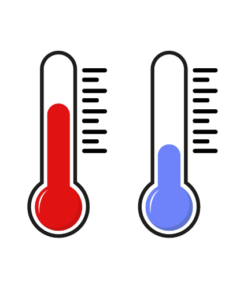Why is my balance not weighing accurately? (Temperature fluctuations)

Changes in temperature where a balance is located can cause calibration drift. A condition where a balance stops weighing accurately.
Keywords: laboratory balance, precision weighing, temperature, environmental factors, calibration, laboratory equipment
Introduction
Laboratory balances are essential tools for accurate measurements in scientific research, quality control, and other industries. However, their performance can be significantly influenced by environmental factors, including temperature. Understanding the impact of temperature on weighing accuracy is crucial for ensuring reliable results.
How Temperature Affects Weighing Performance
Temperature fluctuations can affect the performance of a laboratory balance in several ways:
- Thermal Expansion:
- As temperature increases, the materials of the balance, such as the balance arm, pan, and internal components, expand. This expansion can lead to changes in the balance’s calibration and result in inaccurate measurements.
- Air Density:
- Temperature affects air density. As temperature increases, air density decreases, which can influence buoyancy effects on the weighed object. This can lead to systematic errors in measurements, especially for objects with low density.
- Electronic Components:
- The electronic components within the balance, such as sensors and microprocessors, can be sensitive to temperature changes. Extreme temperature fluctuations can affect their performance, leading to instability and inaccurate readings.
Mitigating the Effects of Temperature
To minimize the impact of temperature on laboratory balance performance, consider the following strategies:
- Temperature-Controlled Environment:
- Ideally, laboratory balances should be placed in a temperature-controlled environment with minimal temperature fluctuations.
- Regular Calibration:
- Calibrate your balance regularly to account for changes in temperature and other environmental factors.
- Warm-Up Period:
- Allow the balance to warm up to the ambient temperature before using it to ensure stable performance (a minimum period of one hour is recommended, however this increases for high accuracy weighing equipment
- External Heat Source:
- Position the balance away external heat sources that warm the balance up eg direct sunlight / heat from radiators / light bulbs and other sources of heat to prevent rapid temperature changes. If you notice the balance operates erratically at the same time each day, it may be due to the sun shining directly on it.
- Use Temperature Compensation:
- Some high-precision balances have built-in temperature compensation features that can help to correct for temperature-related errors.
- Stand by mode
- Leave the balance on and in stand by mode when not in use. This is achieved by leaving the balance connected to the mains, and then turning the balance off on the keypad. In this mode it will not cool down completely, staying close to the recommended operating temperature.
Conclusion
By understanding the impact of temperature on laboratory balance performance and implementing appropriate mitigation strategies, you can significantly improve the accuracy and reliability of your weighing results. By investing in a stable environment, regular calibration, and proper equipment maintenance, you can ensure that your laboratory balance delivers consistent and precise measurements.
© 2024 European Instruments Ltd

